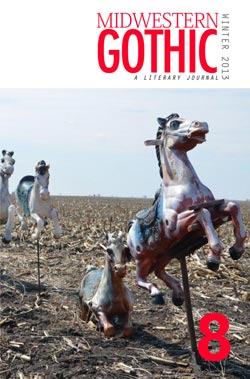A Memory of Light: 2013 Book #3
I started reading Robert Jordan’s Wheel of Time series back in the seventh grade. I’m thirty-two now, with the final book just released and on my “read” shelf. I’m not the only one who can claim this – fans of this series are legion, and with fourteen books that often clock in at a thousand pages or more – folks have spent a lot of time with this series.
Folks have also been waiting a long time for this series to end. Part of me thought there was no way Jordan or Sanderson could end this in a satisfying way. Part of me hoped it would, after Sanderson took over after Jordan’s death and erased all the frustration myself and a lot of fans felt with the series not going much of anywhere between books seven and eleven.
Long story short, he pulled it off. Like the other two books Sanderson has penned, this one has its imperfections, but delivers in an epic way. Made all that much more impressive when you think about the scope of what Sanderson inherited. In fantasy fiction, this is Abrams inheriting Star Wars. The only thing more daunting I could imagine for an author in this context would be if a publisher decided to do a second trilogy set in Middle Earth.
I’ll hit the highlights and try to avoid spoilers as much as I can.
For those wondering if this book would be all Last Battle, given the way Towers of Midnight ended – it is. There’s one massive 190-page chapter entitled “The Last Battle,” but really, the whole book is the forces of Light against the forces of the Shadow. It’s nearly all action, and you literally never come up for air after page 1. If the other thirteen books hadn’t spent so much time on character development, backstory and world building, I’d say this was a flaw. But for the most part, it works. One thing I didn’t like was how well things went for the side of the Light in the first half of the book. It definitely becomes an even fight, but for much of the initial scenes, everything felt way too tidy.
This final struggle is depicted from all angles. There’s no fighting or conflicts that happen “off-screen.” Sanderson’s structure in this book is to jump from character to character, going wherever the action is, showing us exactly what we need to see and moving on. There are no Mat chapters or Rand chapters, each one holds four or five perspectives. Every major character has a role to play in this book. The two characters I had a problem with Sanderson’s interpretation of are a little easier to stomach, Mat and Suian. Mat still feels off to me, and Suian only has a handful of sections from her perspective, but on the whole he seems to have figured them out, which was lacking in his other books.
The one criticism I would have is that the book suffers from the old cliché of characters not doing what makes sense for the sake of drama. See Demandred calling for Rand’s head through an entire battle instead of laying waste to soldiers. See Androl standing right next to one of the Forsaken leading the Shadow’s army and doing nothing so he can go after Mazrim Taim instead. See Demandred refusing to use the Power or accepting help from his lackeys when he crosses swords with would be foes. Once or twice would be forgivable, but it happens a lot in this book.
I couldn’t imagine anyone reading the first thirteen books and not picking this one up. But if you’re one of the folks who quit after an entire book went by without the appearance of their favorite character, or stopped reading after a volume ended with more Forsaken alive than it had started with, and are wondering whether or not it’s worth diving back in now that it’s over – I’d definitely recommend doing so. I think you’ll find the last three and the final book are mostly everything you hoped it’d be.




